Active 18 May 1703 –present | ||
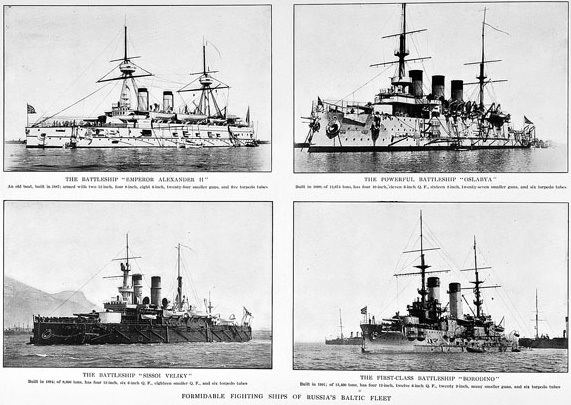 | ||
Allegiance Tsardom of Russia(1703–1721) Russian Empire(1721–1917) Soviet Union(1917–1991) Russian Federation(1991–present) Role Naval warfareAmphibious warfare Size 55 Warships2 Submarines | ||
The Baltic Fleet (Балтийский флот) is the Russian Federation Navy's presence in the Baltic Sea. In previous historical periods, it has been part of the navy of Imperial Russia and later the Union of Soviet Socialist Republics (Soviet Union). The Fleet gained the '"Twice Red Banner"' appellation during the Soviet period, indicating two awards of the Order of the Red Banner. It is headquartered in Kaliningrad (formerly Königsberg in East Prussia of Imperial Germany), with its main base in Baltiysk and another base at Kronshtadt, in the Gulf of Finland. Established 18 May 1703, under Czar Peter the Great, the Fleet is the oldest Russian Navy formation.
Contents
Imperial Russia
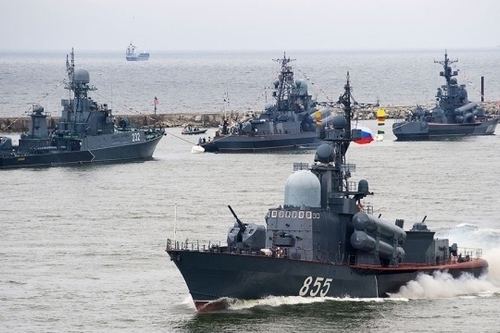
The Imperial Russian Baltic Fleet was created during the Great Northern War at the initiative of Czar Peter the Great, who ordered the first ships for the Baltic Fleet to be constructed at Lodeynoye Pole in 1702 and 1703. The first commander was a recruited Dutch admiral, Cornelius Cruys, who in 1723 was succeeded by Count Fyodor Apraksin. In 1703, the main base of the fleet was established in Kronshtadt. One of the fleet's first actions was the taking of Shlisselburg. In 1701 Peter the Great established a special school, the School of Mathematics and Navigation (Russian: Школа математических и навигацких наук), situated in the Sukharev Tower in Moscow. As the territory to the west around the Gulf of Finland was acquired by Russia for a "warm-water" port giving access for its merchantmen and the buildup of a naval force, the city of St. Petersburg was built and developed an extensive port. The Fleet's base was moved to St. Petersburg and in 1752 it was renamed the Naval Cadet Corps. Today it is the St. Petersburg Naval Institute – Peter the Great Naval Corps.
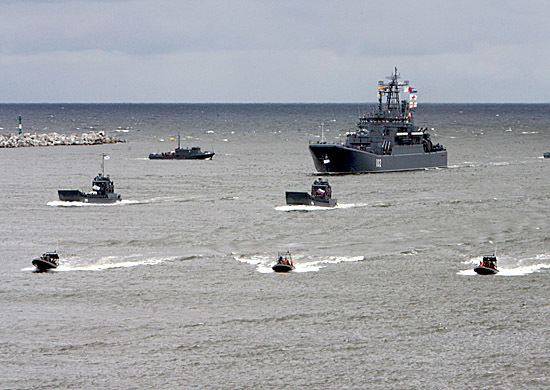
The Baltic Fleet began to receive new vessels in 1703. The first vessel, the 24-gun three-masted frigate Shtandart, is considered to flagship of the fleet and an example of a newly popular design of warship, the frigate.
By 1724, the fleet boasted 141 sail warships and hundreds of oar-propelled ships.
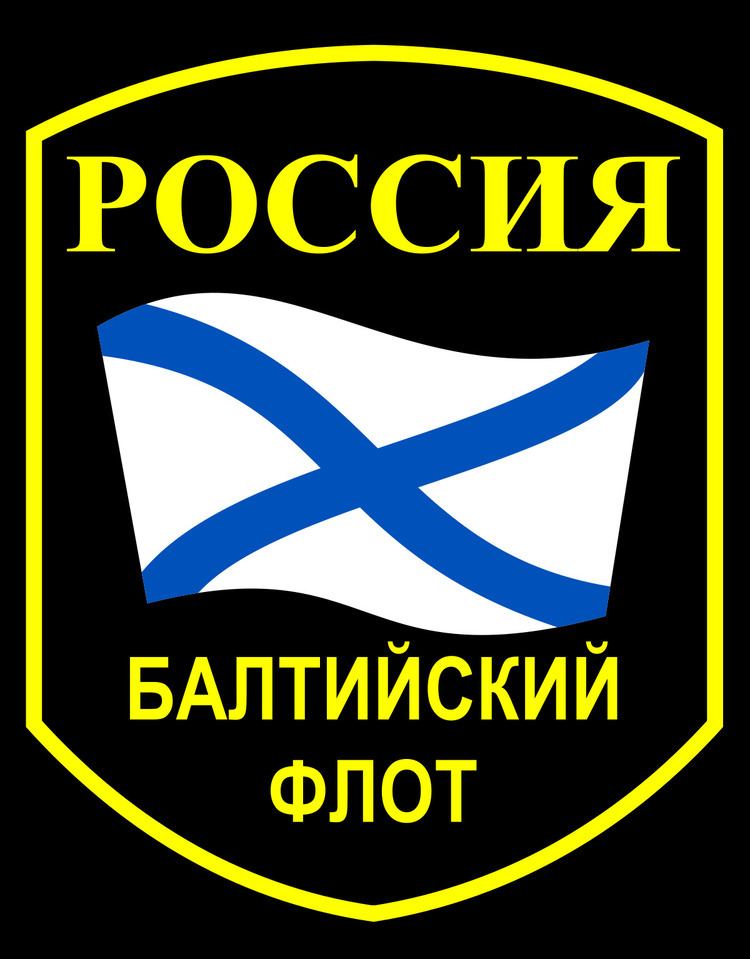
During the Great Northern War, the Baltic Fleet assisted in taking Viborg, Tallinn, (Estonia), Riga, (Latvia), the West Estonian archipelago (Moonsund archipelago), Helsinki, (Finland), and Turku. The first claimed victories of the new Imperial Russian Navy were the Gangut (Swedish: Hangöudd) in 1714 and, arguably, the Grengam (Swedish: Ledsund) in 1720. From 1715, the English Royal Navy intervened in the Baltic Sea on behalf of the German principality of Hanover, (dynastic home of the current British monarchy) and more or less in a tacit alliance with Russia. During the concluding stages of the war, the Russian fleet would land troops along the Swedish coast to devastate coastal settlements. However, after the death of King Charles XII, the Royal Navy would rather protect Swedish interests after a rapprochement between the Kingdom of Sweden and King George I. A Russian attempt to reach the Swedish capital of Stockholm was checked at the Battle of Stäket in 1719. The losses suffered by the Russian Navy at the Grengam in 1720, as well as the arrival of a Royal Navy squadron under Admiral John Norris, also prevented further operations of any greater scale before the war ended in 1721.
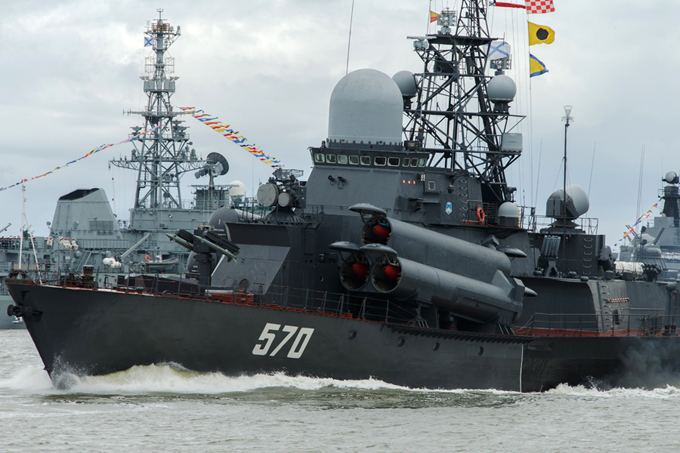
During the "Seven Years' War", (1755-1763), the Russian Baltic Sea fleet was active on the Pomeranian coast of northern Germany and Prussia, helping the infantry to take Memel in 1757 and Kolberg in 1761. The Oresund was blockaded in order to prevent the British Navy from entering the Baltic sea. During the Russo-Swedish War (1788–1790) the fleet, commanded by Samuel Greig, checked the Swedes at Hogland (1788) and the Viborg (1790). An impetuous Russian attack on the Swedish galley flotilla on 9 July 1790 at the Second Battle of Svensksund resulted in a disaster for the Russian Navy who lost some 9,500 out of 14,000 men and about one third of their flotilla. The Russian defeat in this battle effectively ended the war.
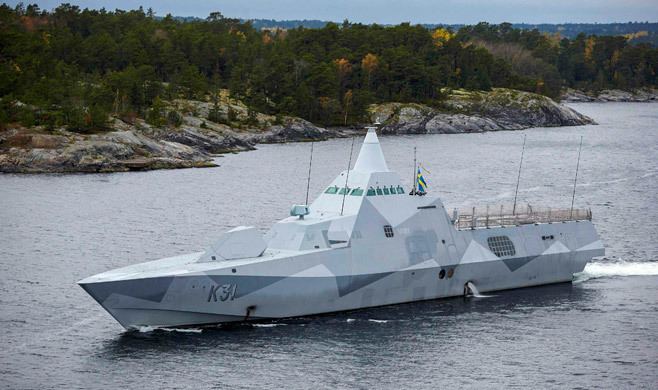
During the series of Russo-Turkish Wars, (1710-1711, 1735-1739, 1768-1774, 1787-1792, 1806-1812, 1828-1829), the fleet sailed into the Mediterranean Sea on the First and Second Archipelago Expeditions and destroyed the Ottoman Imperial Navy at the sea Battles of Chesma (1770), the Dardanelles (1807), Athos (1807), and Navarino (1827). At about the same time, Russian Admiral Ivan Krusenstern circumnavigated the globe, while another Baltic Fleet officer — Fabian Gottlieb von Bellingshausen — discovered the southern ice-covered continent, Antarctica.
In the Crimean War, (1853-1856), the fleet – although stymied in its operations by the absence of steamships – prevented the British and French Allies from occupying Hangö, Sveaborg, and Saint Petersburg. Despite being greatly outnumbered by the technologically superior Allies, it was the Russian Fleet that introduced into naval warfare such novelties as torpedo mines, invented by Boris Yakobi. Other outstanding inventors who served in the Baltic Fleet were Alexander Stepanovich Popov (who was the first to demonstrate the practical application of electromagnetic (radio) waves), Stepan Makarov (the first to launch torpedoes from a boat), Alexei Krylov (author of the modern ship floodability theory), and Alexander Mozhaiski (co-inventor of aircraft).
Age of iron
As early as 1861, the first armor-clad ships were built for the Baltic Fleet. In 1863, during the American Civil War, most of the Fleet's ocean-going ships, including the flagship "Alexander Nevsky" were sent to New York City. At the same time ten "Uragan"-class monitors based on an American-designed "Passaic" monitor were launched. Here it was the policy of the Czar and his government to show support for the Northern Union Army in the United States during their Civil War, observing and exchanging naval tactics and cooperation. In 1869, the fleet commissioned the first turret on a battleship in the world – "Petr Veliky". Furthermore, in the second half of the 19th and early 20th Century a strong network of coastal artillery batteries was created to cover the approaches to St. Petersburg, Riga, and other important bases.
The Baltic Fleet took a prominent part in the Russo-Japanese War. After the defeat of earlier Far East Fleet vessels, in September 1904, a squadron under the command of Admiral Zinovy Rozhestvensky was sent on a famous high-speed dash around South Africa – stopping in French, German and Portuguese colonial ports: Tangier in Morocco, Dakar in Senegal, Gabon, Baía dos Tigres, Lüderitz Bay, and Nossi Be (Madagascar), then across the Indian Ocean to Cam Ranh Bay in French Indochina and then northward to its doomed encounter with the Japanese fleet at the Battle of Tsushima off the east coast of Korea in 1905, ending the Russo-Japanese War. The Imperial German civilian passenger Hamburg-Amerika Line provided 60 colliers to supply the Baltic Fleet on its epic journey. During its passage through the North Sea the Fleet mistook a fleet of British fishing boats for Japanese torpedo boats and opened fire, killing three sailors in what is known as the "Dogger Bank incident". The decision to send the Fleet to the Pacific was made after Russia had suffered a string of naval defeats in the East China Sea and the Sea of Japan off the coast of China and Korea near its Far East naval base and colony at the hands of the newly emergent Imperial Japanese Navy and Army in Manchuria. This historic naval battle broke Russian strength in East Asia and set the stage for the unsuccessful uprising in the abortive Russian Revolution of 1905, which began the decline that would see the Romanov dynasty monarchy eventually brought down with the strains of World War I in 1917.
World War I
Following the catastrophic losses in battleships during the Russo-Japanese War, Russia embarked on a new naval building program which was to incorporate a number of the most modern "dreadnought"-type battleships into the fleet along with other vessels and practices adopted from the Western navies. In late 1914, four "dreadnoughts" of the "Gangut" class entered service with the Fleet: Gangut; Poltava; Petropavlovsk; and Sevastopol. Four more powerful battlecruisers of the "Borodino" class were under construction, but were never completed. The Fleet's main operation during World War I was the "Ice Cruise" of the Baltic Fleet (1918), led by Admiral Alexander Zelenoy. However, on the whole the heavy units of the Fleet remained in port during the war, as the Imperial German Navy's superiority in battleships and other vessels was overwhelming and it was difficult to communicate with Great Britain's Royal Navy forces further west in the North Sea even though they had the Germans bottled up after the Battle of Jutland in 1916.
The Imperial Russian Navy's Baltic Fleet included a submarine division that had about 30 submarines (undersea boats) of several classes and various auxiliary vessels, the largest of which were the transport and mother ships "Europa", "Tosno", "Khabarovsk", "Oland" and "Svjatitel Nikolai". Some of the Fleet's 355-ton submarines were made by Electric Boat Company of Groton, Connecticut in the United States, main supplier and builder of subs for the U.S. Navy. Five of these "AG (Holland)" class submarines were prefabricated by the British Pacific Engineering & Construction Company at Barnet (near Vancouver), in Canada's British Columbia, also under contract to the Electric Boat Company. These Canadian-built subs were shipped to Russia, a fellow Ally in the First World War in December 1915., Four of these submarines, AG 11, AG 12, AG 15 and AG 16 were scuttled in the harbour of Hanko on 3 April 1918, just before the 10,000-strong Imperial German Baltic Sea Division landed in support of the "Whites" forces in the little known Finnish Civil War. During the war the Fleet was aided by a detachment of British Royal Navy submarines. These subs were later scuttled by their crews near the Harmaja lighthouse outside Helsinki, Finland, on 4 April 1918.
October Revolution and Russian Civil War (1917–22)
During the October Revolution the sailors of the Baltic Fleet (renamed "Naval Forces of the Baltic Sea" in March 1918) were among the most ardent supporters of Bolsheviks, and formed an elite among Red military forces. Some ships of the fleet took part in the Russian Civil War, notably by clashing with the British navy operating in the Baltic as part of intervention forces. Over the years, however, the relations of the Baltic Fleet sailors with the Bolshevik regime soured, and they eventually rebelled against the Soviet government in the Kronstadt rebellion in 1921, but were defeated, and the Fleet de facto ceased to exist as an active military unit.
1922–41
The Fleet, renamed the Red-Banner Baltic Fleet on 11 January 1935, was developed further during the Soviet years, initially relying on tsarist warships, but adding modern units built in Soviet yards from the 1930s onwards. Among the Fleet's Soviet commanders were Gordey Levchenko in 1938–39 and Arseniy Golovko in 1952–56. Ships and submarines commissioned to the fleet included Soviet submarine M-256, a Project 615 short-range attack diesel submarine of the Soviet Navy. The fleet also acquired a large number of ground-based aircraft to form a strong naval aviation force.
In September 1939, the fleet threatened the Baltic states as part of a series of military actions staged to encourage the Baltics to accept Soviet offers of "mutual assistance." Subsequently, in June 1940, the fleet blockaded the Baltics in support of the Soviet invasion.
Winter War
Finland, which had refused to sign a "pact of mutual assistance", was attacked by the USSR. The fleet played a limited role in the Winter War with Finland in 1939–1940, mostly through conducting artillery bombardments of Finnish coastal fortifications. Many fleet aircraft were involved in operations against Finland, however. Its operations came to a close with the freezing of the Gulf of Finland during the exceptionally cold winter of that year.
World War II
In the beginning of the German invasion the Baltic Fleet had 2 battleships, 2 cruisers, 2 flotilla leaders, 19 destroyers, 48 MTBs, 65 submarines and other ships, and 656 aircraft. During the war the Fleet, commanded by the Vice-Admiral Vladimir Tributz, defended the Hanko Peninsula, Tallinn, several islands in Estonian SSR, participated in the break through breach of the Siege of Leningrad, etc. 137 sailors of the Baltic Fleet were awarded a title of the Hero of the Soviet Union. However, for most of the war the fleet was trapped by German and Finnish minefields in Leningrad and nearby Kronstadt, the only bases left in Soviet hands on the Baltic coast. Another key factor was that the Finns had recaptured outer islands of the Gulf of Finland, Suursaari being the most important of them. Many of the fleet sailors fought on land as infantry during the siege. Only submarines could risk the passage into the open sea to strike at German shipping. They were particularly successful towards the end of the war, sinking ships like Wilhelm Gustloff, Steuben and Goya, causing great loss of life.
The Fleet carried out the Soviet evacuation of Tallinn in late August 1941.
Grouping in June 1941
Cold War
During the Immediate post-war period the importance of the Red-Banner Baltic Fleet increased despite the Baltic being a shallow sea with the exits easily becoming choke points by other countries. The Baltic Fleet was increased to two Fleets, the 4th Red-Banner Baltic Fleet and the 8th Red-Banner Baltic Fleet on 15 February 1946. However, during the post-Stalinist period and general reforms and downsizing in the Soviet Armed Forces the two fleets of the Baltic were again reduced, with many vessels, some built before the Revolution, were scrapped, and the Fleet was again renamed Red-Banner Baltic Fleet on 24 December 1955.
In Liepāja the Baltic Fleet's 14th submarine squadron, call sign "Kompleks" ("Комплекс") was stationed with 16 submarines (613, 629a, 651); as was the 6th group of rear supply of Baltic Fleet, and the 81st design bureau and reserve command center of the same force.
Far from being reduced in importance, operations of the Red-Banner Baltic Fleet during the early-Cold War period earned it a great amount of prestige and profile, with the second awarding of the Order of Red Banner being presented on 7 May 1965 when the Fleet was again renamed to Twice Red-Banner Baltic Fleet. Although the Soviet Union poured resources into building up the Northern Fleet and the Pacific Fleet, both of which had easy access to the open ocean, the Twice Red-Banner Baltic Fleet assumed the very important position of supporting the northern flank of the European Theatre in case of a confrontation with NATO. This role was under-rated from the blue water navies perspective, but was seen as a highly valuable one from the strategic perspective of the Soviet General Staff planning. The Twice Red-Banner Baltic Fleet remained a powerful force, which in the event of war was tasked with conducting amphibious assaults against the coast of Denmark and Germany, in cooperation with allied Polish and East German naval forces.
A notable incident involving the fleet occurred in 1975 when a mutiny broke out on the frigate Storozhevoy. There were also numerous allegations by Sweden of Baltic Fleet submarines illegally penetrating its territorial waters. In October, 1981 the Soviet Whiskey-class submarine U 137 ran aground in Swedish territorial waters, near the important naval base of Karlskrona, causing a serious diplomatic incident. Swedish naval vessels pulled the submarine into deeper water and permitted it to return to the Soviet fleet in early November.
Under the Russian Federation
The breakup of the Soviet Union deprived the Fleet of key bases in Estonia, Latvia and Lithuania, leaving Kaliningrad Oblast as the Fleet's only ice-free naval outlet to the Baltic Sea. However, the Kaliningrad Oblast between Poland and Lithuania is not contiguous with the rest of the national territory of the Russian Federation.
In 1989 3rd Guards Motor Rifle Division at Klaipeda was transferred to the fleet as a coastal defence division. It was disbanded on 1 September 1993.
In the late 1990s the 336th Independent Guards Naval Infantry Brigade and the remnant of the 11th Guards Army of the Baltic Military District were subordinated to a single command named the Ground and Coastal Forces of the Baltic Fleet under a deputy fleet commander. The 11th Guards Army remnant included the 7th Guards Motor Rifle Regiment and the brigade that was the former 18th Guards Motor Rifle Division, plus several Bases for Storage of Weapons and Equipment, holding enough vehicles and weaponry for a division but only having a few hundred men assigned to maintain the equipment and guard the bases. warfare.be listings in 2013 report that the staff of the Ground and Coastal Defence Forces of the Fleet may have been disbanded in November 2007.
The fleet's aviation units were equipped with a total of 23 Su-27, 26 Su-24, 14 An-12/24/26, 2 An-12 Cub (MR/EW), 11 Mi-24 Hind, 19 Ka-28 Helix, 8 Ka-29 Helix assault helicopters, and 17 Mi-8 Hip transport helicopters in 2007, according to the IISS.
As of 2008 the Baltic Fleet included about 75 combat ships of various types. The main bases is in Baltiysk and a second operational base is in Kronstadt. The Leningrad Naval Base is an administrative entity that is not a discrete geographic location but comprises all of the naval institutions and facilities in the St. Petersburg area. It should be noted that the assignment of the 106th Small Missile Ship Battalion is disputed; warfare.be places it under the 64th Naval Region Protection Brigade, while Holm, probably working from older sources, places it under the 36th Missile Ship Brigade.
In June 2016, fleet commander Vice Admiral Viktor Kravchuk and his chief of staff, Vice Admiral Sergei Popov, were dismissed for "serious training shortcomings and distortion of the real situation". N. G. Kuznetsov Naval Academy commander Vice Admiral Alexander Nosatov was made acting commander of the fleet, a position in which he was confirmed on 17 September.
Operational forces include:
12th Surface ship Division
Leningrad Naval Base
Baltyysk Naval Base
Ships whose unit allocation is not precisely known
Naval Aviation (2007):
